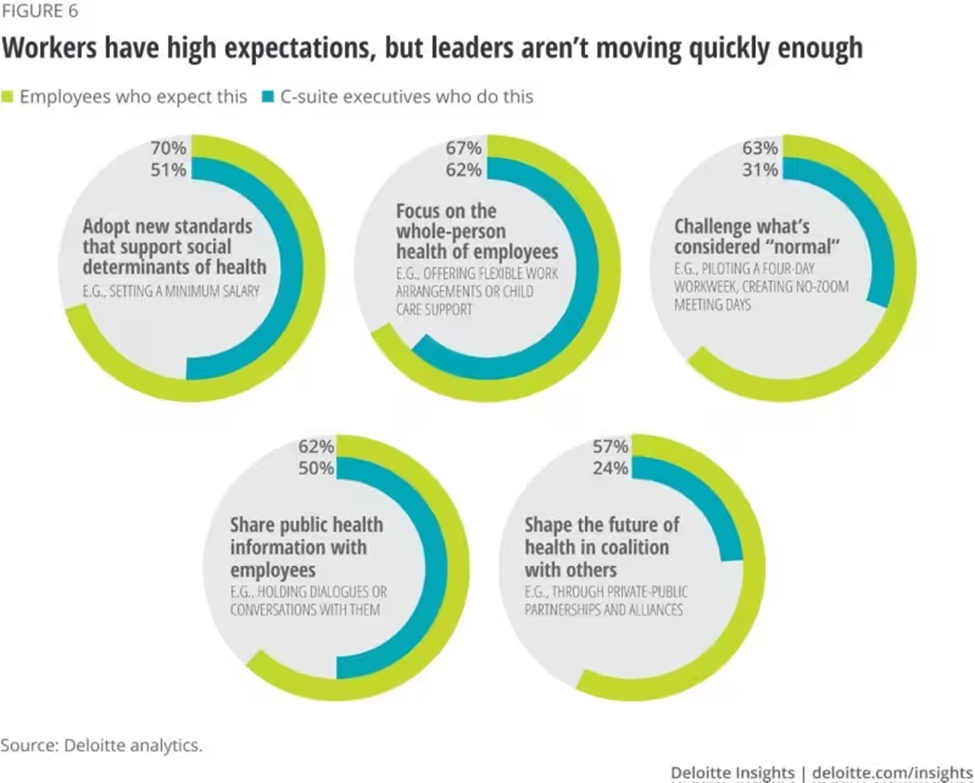Taking Care of the Leaders: Why Executive Wellness Programs Improve Success

Executives play a pivotal role in shaping the direction and success of a company. Their decisions impact not only the bottom line but also the overall morale and performance of the workforce. However, the demanding nature of their roles often leads to increased stress, long hours, and neglect of personal well-being. Ignoring the health and wellness of executives can have detrimental effects on both individuals and the organization as a whole.
This blog post explores the importance of executive wellness programs in corporate settings, highlighting how they can improve productivity, reduce stress, and foster a positive work culture.
The Link Between Executive Well-Being and Organizational Success
As leaders set the tone and direction for their teams, their physical, mental, and emotional health directly impact decision making, productivity, and workplace culture. Understanding this link is essential for fostering sustainable organizational growth and prosperity.
Why Is the Relationship Between the Well-Being of Leaders and the Performance of Their Organizations Important?
When executives are stressed, burned out, or facing health issues, it can impair their decision-making abilities, diminish their creativity, and hinder their effectiveness in leading their teams. Additionally, it can lead to higher turnover rates among executives, which can disrupt organizational stability and productivity.
Well-being is a consideration for many executives. A study by Deloitte and Workplace Intelligence for Tier 1 markets found that 70% of C-suite executives would switch companies for a job that supports their well-being, and 81% said their wellness is more important than being promoted.

Executives’ Well-Being Impacts Company Culture Around Health and Wellness
The behavior and attitudes of leaders often set the tone for the entire company's culture. If executives prioritize work over their health and well-being, it sends employees a message that self-care is unimportant. This can create a culture of overwork and burnout, ultimately leading to decreased morale, engagement, and retention among employees.
The Benefits of Executive Wellness Programs
Implementing executive wellness programs can yield numerous benefits for both executives and the organization. These programs are designed to support the physical, mental, and emotional well-being of leaders, enabling them to perform at their best while maintaining a healthy work-life balance.
- Executive wellness initiatives lead to improved productivity. Well-rested, physically fit, and mentally sharp executives make clearer decisions, solve problems more efficiently, and inspire greater creativity and innovation within their teams. This leads to improved performance and greater overall success for the organization.
- Executive wellness programs can help reduce stress levels among leaders. Stress is a common problem in corporate environments, but when left unchecked, it can have serious consequences for both individuals and organizations. Initiatives such as mindfulness training, stress management workshops, and access to mental health resources help create a healthier and more resilient leadership team.
- Executive wellness programs foster a positive work culture within the organization. When leaders prioritize their well-being, it sets a positive example for employees at all levels. Leading by example inspires employees to take care of their health too. This can lead to higher levels of employee satisfaction, engagement, and loyalty, as well as a more cohesive and supportive work environment.
Designing Effective Executive Wellness Programs
Designing effective executive wellness programs requires a holistic approach that addresses the unique needs and challenges faced by leaders. These programs should encompass a variety of wellness initiatives, including physical fitness, nutrition, mental health support, stress management, and work-life balance strategies.
Take these actions into consideration when designing a wellness program geared toward executives:
1. Provide Personalized Support and Resources
Executives have diverse needs and preferences regarding wellness, so offering a range of options allows them to choose the strategies that work best for them. This may include offering gym memberships, access to wellness coaches, nutrition counseling, and flexible work arrangements.
2. Integrate Wellness Into the Corporate Culture and Values of the Organization
Wellness should be seen as an integral part of the company's mission, rather than just an optional perk for executives. Wellness initiatives like company-wide communications, incorporating wellness goals into performance evaluations, and creating a supportive environment where employees feel encouraged to prioritize their health and well-being can go a long way.
3. Regularly Evaluate and Adapt to Meet the Evolving Needs of Leaders and the Organization
This may involve collecting feedback from participants, tracking key metrics related to wellness and performance, and staying informed about emerging trends and best practices in executive health and wellness.
4. Share Information With Employees
Only 50% of employees report that their executives share public health information with them, while 62% of executives say they share the information with employees.

Diversity and Inclusion in Management Wellness Programs
Diversity and inclusion initiatives should start with management, and employees need to see themselves represented in the leadership. When designing executive wellness programs, it's essential to integrate diversity and inclusion, improve employee engagement, and help staff see themselves represented.
- Incorporate inclusion policies into the wellness program. This may involve offering culturally sensitive wellness resources, providing accommodations for individuals with disabilities, and addressing systemic barriers to wellness, such as discrimination and inequality.
- Prioritize diversity and a culturally sensitive environment. Diversity and inclusion should be part of the company culture, not just wellness programs. Addressing issues of diversity and inclusion alleviates stress and improves employees’ wellness.
Wellness Starts From the Top
Executive wellness programs play a crucial role in supporting the health, happiness, and effectiveness of corporate leaders. By investing in the well-being of executives, companies can improve productivity, reduce stress, and foster a positive work culture that benefits the entire organization. Through thoughtful design, personalized support, and a commitment to diversity and inclusion, executive wellness programs can help leaders thrive in their roles and lead their teams to greater success.
Using the CoreHealth platform greatly simplifies the task of developing effective wellness programs for executives. The all-in-one platform is fully customizable to your organization’s needs and designed to meet every employee, including C-Suite executives' health. Combining technology with the science of prevention, CoreHealth addresses employees’ physical, mental, and social well-being, delivering multi-lingual assessments.
Discover how CoreHealth helps organizations design and implement executive wellness programs that benefit both the organization and its employees. Speak to one of our experts today.
If you found this information useful, share it on social media!
Learn more about Corporate Wellness
- How to Keep Employees Happy and Productive
- Designing an Effective Employee Wellness Program in 2023
- Executive Wellness is Good for Business
About The Author
CoreHealth Marketing
CoreHealth Technologies Inc. is a total well-being technology company trusted by global providers to power their health and wellness programs. Our wellness portals help maximize health, engagement, and productivity for 3+ million employees worldwide.



